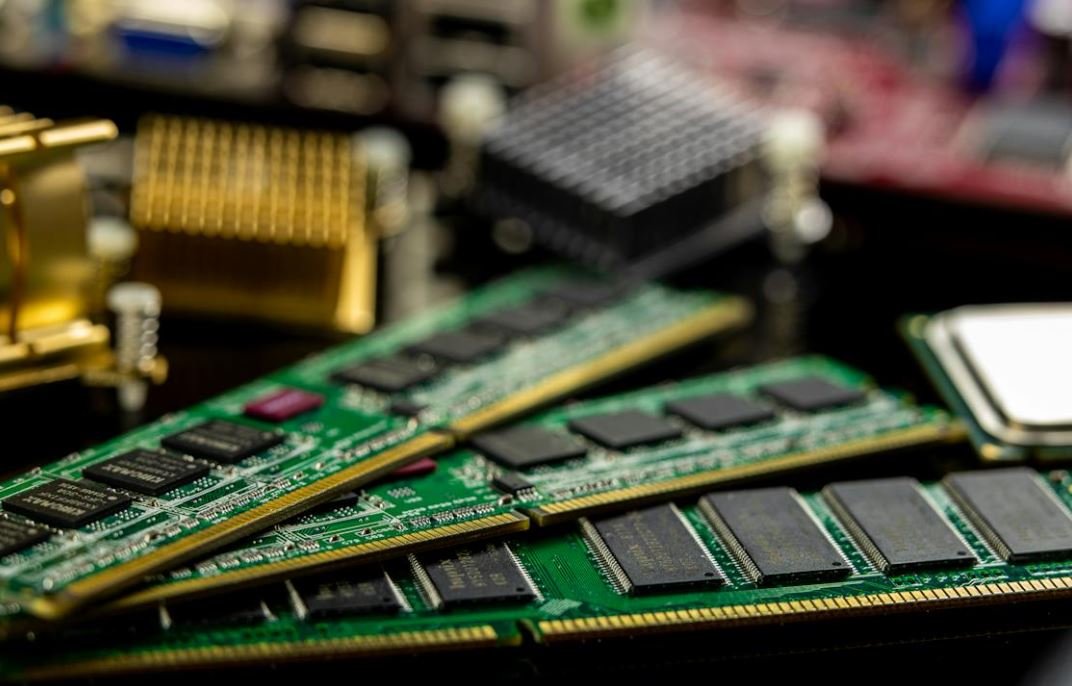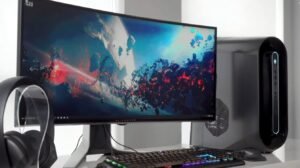GPT Partition
A GPT (GUID Partition Table) is a modern disk partitioning system that replaced the older MBR (Master Boot Record) partitioning scheme. Created as part of the UEFI (Unified Extensible Firmware Interface) specification, GPT offers several advantages over MBR, including support for larger disk sizes, improved reliability, and increased flexibility. Understanding GPT partitioning is crucial for managing and utilizing disk space effectively.
Key Takeaways
- GPT (GUID Partition Table) is a modern disk partitioning system that replaced MBR.
- GPT offers support for larger disk sizes, increased reliability, and improved flexibility.
- Understanding GPT partitioning is crucial for effective disk management.
Overview of GPT Partitioning
GPT is a partitioning scheme that divides a disk into one or more partitions, which are logical divisions within the disk. Each partition in a GPT disk is identified by a unique globally unique identifier (GUID) and contains information about its size and other attributes. GPT also includes a protective MBR, which helps prevent other software or operating systems from misinterpreting the disk.
GPT provides a more reliable and flexible method of partitioning a disk compared to MBR.
GPT Benefits and Advantages
GPT partitioning offers several benefits and advantages over the older MBR scheme:
- Support for Larger Disk Sizes: GPT supports disk sizes of up to 9.4 zettabytes (ZB), while MBR is limited to a maximum of 2 terabytes (TB). This allows GPT to take full advantage of modern large-capacity storage devices.
- Improved Reliability: GPT utilizes a replication and checksum mechanism to protect critical partitioning data, making it more robust against disk errors and failures.
- Increased Flexibility: GPT allows for a practically unlimited number of partitions on a disk, while MBR is limited to a maximum of four primary partitions.
Understanding GPT Partitions and Partition Types
Each GPT partition has a unique partition type that identifies the purpose or content of the partition. Some common partition types include:
- EFI System Partition (ESP): Contains files necessary for the system’s firmware to boot and start the operating system.
- Microsoft Reserved Partition (MSR): Reserved for Microsoft’s internal use and does not hold any user-accessible data.
- Basic Data Partition: Used for primary data storage and typically holds a file system such as NTFS or exFAT.
GPT Partitioning Example
Here is an example of a GPT partition layout:
| Partition Number | Partition Name | Partition Type |
|---|---|---|
| 1 | EFI System Partition | ESP |
| 2 | Microsoft Reserved Partition | MSR |
| 3 | Windows Operating System | Basic Data Partition |
| 4 | Data Storage | Basic Data Partition |
GPT partitioning allows for a flexible and organized layout of a disk, accommodating various partition types.
GPT and Compatibility
GPT partitioning is compatible with both UEFI and legacy BIOS systems, but it requires a separate boot partition for legacy BIOS compatibility. Most modern operating systems, including Windows (64-bit versions), macOS, and Linux, support GPT partitioned disks.
Conclusion
GPT partitioning offers significant advantages over the older MBR scheme, including support for larger disk sizes, improved reliability, and increased flexibility. Understanding GPT partitions and their benefits is essential for effective disk management and utilization. With GPT, you can harness the full power and capacity of modern storage devices.

Common Misconceptions
Misconception 1: GPT Partition is limited to large hard drives
One common misconception about GPT Partition is that it can only be used on large hard drives. However, GPT Partition can be used on both large and small hard drives. It is true that GPT Partition is recommended for drives larger than 2 terabytes, but it can still be beneficial to use GPT Partition on smaller drives as well.
- GPT Partition can provide improved performance on smaller drives.
- GPT Partition allows for unique identifiers, increasing reliability and ensuring data integrity.
- GPT Partition allows for up to 128 primary partitions, providing greater flexibility in organizing data.
Misconception 2: GPT Partition is not supported by older operating systems
Another misconception surrounding GPT Partition is that it is not supported by older operating systems. While it is true that some older versions of operating systems may not fully support GPT Partition, many modern operating systems, such as Windows 10, macOS, and Linux, have native support for GPT Partition.
- Many older operating systems can still read GPT Partition but may not be able to boot from it.
- Various tools are available to convert from MBR (Master Boot Record) to GPT Partition for older systems.
- Compatibility with older operating systems can also be achieved through third-party boot managers.
Misconception 3: GPT Partition cannot be used with BIOS
There is a misconception that GPT Partition can only be used with UEFI (Unified Extensible Firmware Interface) and is not compatible with BIOS (Basic Input/Output System). Although GPT Partition is designed to work seamlessly with UEFI, it can also be used with BIOS systems by enabling a Compatibility Support Module (CSM).
- GPT Partition with BIOS requires the CSM to be enabled in the motherboard’s firmware settings.
- Enabling the CSM allows BIOS systems to read GPT Partition and boot from it.
- It is important to note that some functionalities, such as secure boot, may not be available when using GPT Partition with BIOS.
Misconception 4: GPT Partition is more prone to data corruption
Some people believe that using GPT Partition increases the risk of data corruption compared to using MBR Partition. However, GPT Partition has built-in features that help protect data integrity and reduce the chances of corruption.
- GPT Partition uses cyclic redundancy checks (CRC) to verify the integrity of data.
- GPT Partition stores multiple copies of critical data structures for redundancy.
- GPT Partition provides a backup and recovery partition table at the end of the disk.
Misconception 5: Converting from MBR to GPT Partition will result in data loss
There is a misconception that converting from MBR to GPT Partition will lead to data loss. While any disk manipulation carries some risk, the process of converting from MBR to GPT Partition can usually be done without data loss.
- Before converting, it is essential to back up important data to prevent potential loss.
- Third-party software tools are available that can safely convert from MBR to GPT Partition without data loss.
- While the conversion process itself usually doesn’t cause data loss, it is still recommended to have a backup for added security.

Introduction:
GPT Partition is a widely used disk partitioning scheme that offers numerous advantages over the traditional MBR (Master Boot Record) partitioning scheme. With support for significantly larger disk sizes, improved data redundancy, and enhanced disk management capabilities, GPT Partition has become the preferred choice for modern operating systems and storage devices. In this article, we will explore various aspects of GPT Partition through a series of interactive and informative tables.
1. Disk Size Comparison:
This table compares the maximum disk size supported by GPT Partition and MBR Partition schemes, highlighting the scalability advantage of GPT Partition.
Maximum Disk Size (GPT Partition) | Maximum Disk Size (MBR Partition)
———————————|——————————-
18.4467 million terabytes | 2.2 terabytes
2. Partitioning Capabilities:
This table presents the number of primary partitions and logical partitions that can be created using GPT and MBR partitioning schemes.
Partition Type | Maximum Number (GPT) | Maximum Number (MBR)
———————|———————|———————
Primary Partitions | Unlimited | 4
Logical Partitions | Unlimited | 24 (extended partition)
3. Data Redundancy:
GPT Partition incorporates a robust data redundancy mechanism known as the GUID Partition Table Header and GUID Partition Entry Array. This table highlights the redundancy features of GPT Partition.
Redundancy Features | Yes/No
——————————————————|——-
Allows redundant primary GUID partition entries | Yes
Supports cyclic redundancy check (CRC) protection | Yes
Header and partition data copies for fault tolerance | Yes
4. Legacy System Compatibility:
GPT Partition offers backward compatibility with legacy systems through the use of protective MBR. This table explains the compatibility aspects of GPT Partition.
Legacy System | Compatible with GPT Partition
———————-|—————————–
Windows 7 and earlier | Read-only (with BIOS)
Windows 8 and later | Read/Write (with UEFI)
5. Boot Options:
This table presents the boot options available with GPT Partition, considering the usage of BIOS and UEFI.
Boot Environment | Boot Options
————————|——————————–
Legacy BIOS | MBR-formatted partitions only
UEFI (Unified Extensible Firmware Interface) | Both MBR and GPT disks
6. Disk Recovery:
GPT Partition provides enhanced disk recovery capabilities through the use of GPT-specific backup and recovery tools. This table outlines the recovery options available.
Recovery Option | Supported in GPT Partition
—————————–|—————————-
Automatic disk identification and alignment | Yes
Ability to restore from GPT header backups | Yes
Backup and restore partition table and entries | Yes
7. File System Support:
GPT Partition supports a wide range of file systems, enabling compatibility with various operating systems. This table displays the file system compatibility.
File System | Supported by GPT Partition
——————|—————————–
NTFS | Yes
FAT32 | Yes
ext4 | Yes
APFS | Yes
HFS+ | Yes
8. Disk Management:
GPT Partition offers advanced disk management features, empowering users to efficiently manage their storage devices. This table presents the management capabilities.
Management Feature | Supported in GPT Partition
—————————————-|—————————-
Resizing, shrinking, and extending | Yes
Converting MBR to GPT and vice versa | Yes
Creating and deleting partitions | Yes
Assigning drive letters | Yes
9. GPT Partition Structure:
This table illustrates the structure of GPT Partition, showcasing the different components and their functions.
Partition Table Header | Protective MBR (if used)
——————————————-|———————–
GUID Partition Entry Array | Partition 1 (EFI System Partition)
GUID Partition Entry Array (cont.) | Partition 2 (Microsoft Reserved Partition)
GUID Partition Entry Array (cont.) | Partition 3 (Primary partition)
GUID Partition Entry Array (cont.) | …
.
10. Recommended Usage:
Based on its various advantages and capabilities, GPT Partition is suitable for different scenarios. This table provides recommendations for the usage of GPT Partition.
Use Case | Recommended Usage
—————————————–|——————–
Large-scale data servers | Highly recommended
Personal computers and laptops | Recommended
External hard drives and USB flash drives| Recommended
Older systems with BIOS | Selective usage
Conclusion:
GPT Partition has revolutionized disk partitioning, offering improved scalability, data redundancy, and advanced management capabilities. Its compatibility with both modern and legacy systems, along with support for various file systems, makes it an ideal choice for a wide range of applications. By leveraging the power of GPT Partition, users can ensure optimal disk performance, data integrity, and seamless storage management.
Frequently Asked Questions
GPT Partition
-
What is GPT Partition?
GPT Partition refers to the GUID Partition Table, which is a disk partitioning scheme used by modern computer systems. It is an improvement over the older Master Boot Record (MBR) partitioning scheme and allows for larger disk sizes and more flexible partitioning options.
-
How does GPT Partition differ from MBR?
GPT Partition differs from MBR in several ways. GPT Partition allows for a larger number of partitions (up to 128) compared to MBR’s limit of 4 primary partitions. GPT Partition also supports much larger disk sizes, up to 18.4 million terabytes, while MBR has a limit of 2 terabytes. Additionally, GPT Partition provides more robust data protection through redundancy and checksumming.
-
Why should I use GPT Partition?
You should use GPT Partition if you have a modern computer system and need to take advantage of larger disk sizes or require more than 4 partitions. GPT Partition also offers better data integrity and protection features, making it a more reliable option for storage.
-
Can I convert my existing MBR disk to GPT?
Yes, you can convert your existing MBR disk to GPT, but it involves removing all existing partitions and reformatting the disk. It’s important to backup your data before performing this conversion, as it will result in data loss.
-
What operating systems support GPT Partition?
Most modern operating systems, including Windows (starting with Windows Vista), macOS, and various Linux distributions, support GPT Partition. However, it’s important to check the documentation of your specific operating system version to ensure compatibility.
-
Can I dual-boot with GPT Partition?
Yes, you can dual-boot with GPT Partition. Most modern bootloaders, such as GRUB and Windows Boot Manager, support GPT Partition and can handle multi-boot configurations with multiple operating systems on GPT-partitioned disks.
-
Can I use GPT Partition on external drives or USB flash drives?
Yes, GPT Partition can be used on external drives and USB flash drives, provided that the operating system you are using supports GPT and the necessary drivers are installed. Note that some older computers or devices may only support booting from MBR-partitioned external drives or USB flash drives.
-
Are there any limitations or drawbacks to using GPT Partition?
While GPT Partition offers numerous advantages, there are a few limitations and drawbacks to consider. Some older systems or devices may not support booting from GPT-partitioned disks, and certain software or utilities that expect MBR may not work correctly with GPT. Additionally, converting from MBR to GPT involves data loss, so proper backups are crucial.
-
How do I create a GPT Partition?
To create a GPT Partition, you can use disk management tools provided by your operating system, such as Disk Management in Windows or Disk Utility in macOS. These tools allow you to initialize a new disk as GPT and create partitions with desired sizes and file systems.
-
Can I resize or modify GPT partitions?
Yes, you can resize or modify GPT partitions using disk management tools. These tools allow you to shrink, extend, create, delete, and format GPT partitions based on your needs. It’s always recommended to backup important data before making any changes to disk partitions.




